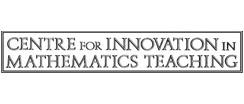Using trigonometry and co-ordinate geometry to solve engineering problems
This resource package is designed to support the teaching and learning of mathematical and graphical methods to find the position of objects and to determine how they move relative to each other, including:
- vector addition and subtraction
- convert between Cartesian (x,y) and polar (r,θ) co-ordinates
- use and convert angles in both degrees and radians
- the solution of triangles, including the sine and cosine rules
- ALL
- STEM Club
- Activity sheet
STEM Club
The mathematics of aircraft navigation
Aircraft navigation is the art and science of getting from a departure point to a destination in the least possible time without losing your way.
In this activity, students imagine that some people are stuck on a mountain in bad weather. Fortunately, with a mobile phone, they managed to contact the nearest Mountain Rescue base for help. The Mountain Rescue team needs to send a helicopter to save these people. With the signal received from the people on the mountain, they determine that the bearing from the helipad to the mountain and the approximate distance.
To solve the problem set students are required to use:
·
vector methods (graphical and component representation of vectors, vector addition and subtraction)
·
manipulation and use of trigonometric functions (sine and cosine rules, ratios in right-angled triangle)
·
standard quadratic formula to find roots of quadratic equation
Study of the Motion of Knee and Ankle during Cycling
This resource shows the application of mathematics within the field of sports technology to compare the potential for injury to the knee or ankle when cycling and when jogging.
Students model a situation involving oscillations, looking at inertial forces, Newton’s Laws of Motion, differentiation and components of vector quantities in the context of engineering analysis and problem solving.
Detailed notes and examples are provided and there are extension activities for students to complete, together with learning outcomes and assessment criteria.
The Mathematics of Escalators on the London Underground
This resource shows the application of mathematics for the operation of escalators on the London underground. Students consider a variety of issues which include passenger numbers and flow, as well as carbon emissions, escalator speed and energy efficiency.
To complete the activity studenst will be required to:
- manipulate and use trigonometric functions (ratios in right-angled triangle)
- calculate percentages
- plot the graphs of simple functions using excel or other resources
Activity sheet
Wavy Edges
When tinplate is manufactured the edge of the strip can be slightly longer than the centre resulting in a wave on the wall of the coil. The percentage elongation needs to be determined in order to eliminate this wave.
This activity requires students to use Pythagoras’ rule and trigonometry to find the angle in a triangle. From this information students find the length of a chord and hence find the percentage difference between the length of a chord and the length of an arc.
Students are then required to generalise their results in terms of variables height (h) and length (l) of a wave. This generalisation can then be graphed and analysed leading to work on calculus.
Geometry
Mathcentre provide these resources which cover aspects of geometry often used in the field of engineering. They include:
- the gradient and intercept of straight line graphs
- polar coordinates
- converting degrees and radians
Comprehensive notes, with clear descriptions, for each resource are provided, together with relevant diagrams and examples. Students wishing to review, and consolidate, their knowledge and understanding of geometry will find them useful, as each topic includes a selection of questions to be completed, for which answers are provided.
Trigonometry
Mathcentre provide these resources which cover aspects of trigonometry, often used in the field of engineering. They include:
- the trigonometric ratios
- using Pythagoras’ theorem
- working with the sine and cosine rules
Comprehensive notes, with clear descriptions, for each resource are provided, together with relevant diagrams and examples. Students wishing to review, and consolidate, their knowledge and understanding of trigonometry will find them useful, as each topic includes a selection of questions to be completed, for which answers are provided.
Vectors
Mathcentre provide these resources which cover aspects of vectors, often used in the field of engineering. They include:
- descriptions of the notation often used to describe vectors
- how to calculate the modulus of vector given in cartesian form
- how to calculate scalar and vector products
Comprehensive notes, with clear descriptions, for each resource are provided, together with relevant diagrams and examples. Students wishing to review, and consolidate, their knowledge and understanding of vectors will find them useful, as each topic includes a selection of questions to be completed, for which answers are provided.




